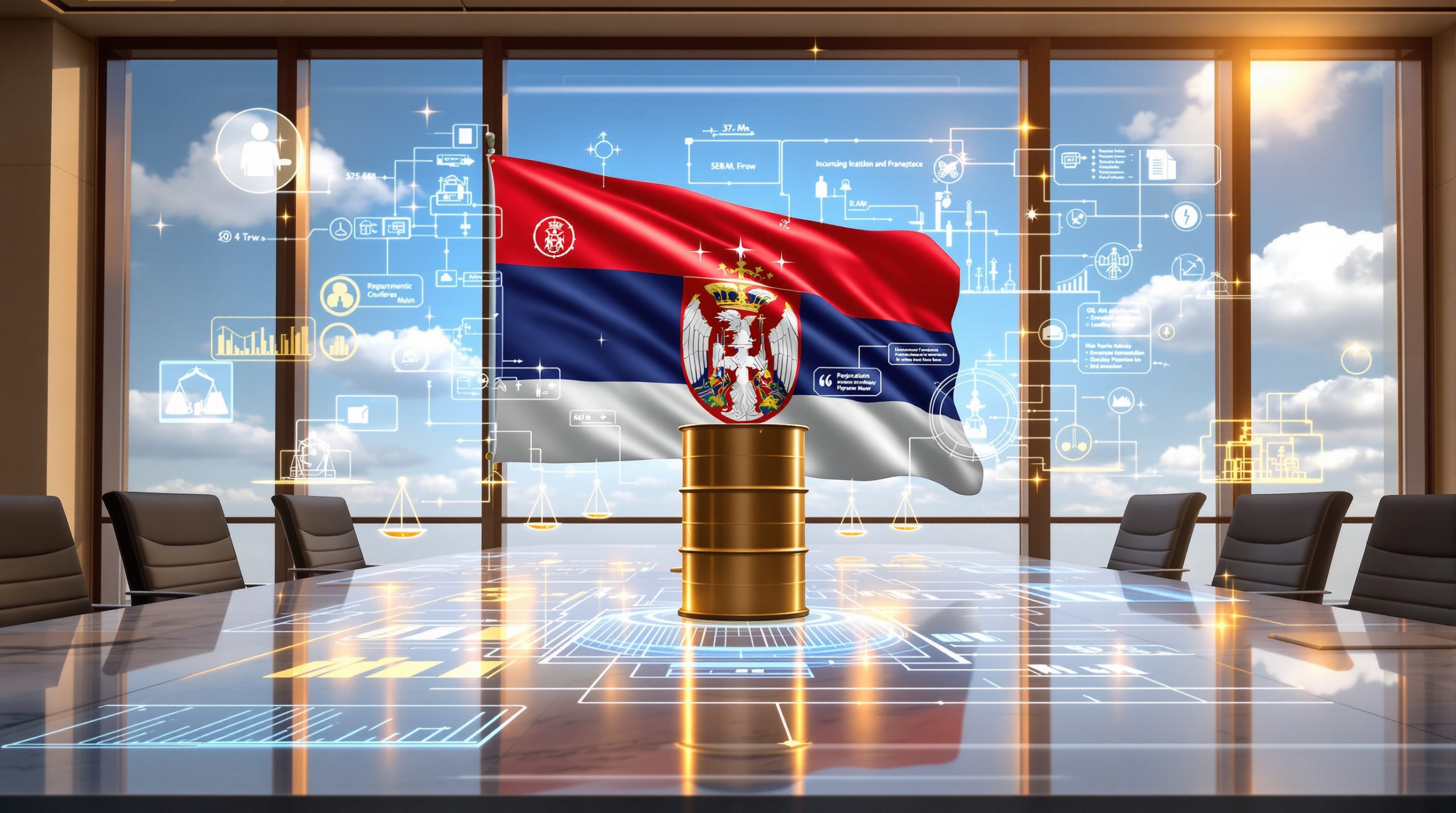Australia's electronic waste represents one of the most underutilised resource streams in the nation's circular economy. With approximately 62 million tonnes of e-waste generated globally each year, and only one-third of Australia's electronic waste currently recycled, the country faces both a massive environmental challenge and an extraordinary economic opportunity. This waste stream contains recoverable concentrations of rare earth elements, copper, gold, and other critical metals that are essential for modern technology applications, highlighting the mineral exploration importance in addressing resource security.
The gap between waste generation and recovery rates reflects deeper structural issues within Australia's resource processing infrastructure. Traditional recycling methodologies struggle with the complex material matrices found in modern electronics, where valuable metals are distributed throughout polymer substrates in microscopic concentrations. This technological limitation has created a scenario where materials worth millions of dollars annually are being diverted to landfill sites rather than contributing to domestic supply chains.
University-led research initiatives serve as critical bridges between fundamental materials science and commercial application. Unlike private sector research, which must demonstrate immediate return on investment, academic investigations can explore longer development timelines and higher-risk methodologies that may yield breakthrough technologies. The recent ARC funding boosts Curtin's rare metals and mineral mapping research, demonstrating government recognition that strategic materials research requires sustained investment in institutional capabilities.
Government funding priorities increasingly reflect national resource security concerns, particularly in critical minerals where supply chain disruptions can impact entire industrial sectors. Furthermore, the focus on university-based research acknowledges that academic institutions possess both the analytical infrastructure and the multidisciplinary expertise necessary to address complex materials challenges that span chemistry, geology, metallurgy, and environmental science.
Breaking Down Curtin's Dual-Track Research Approach
Electronic Waste Recovery: Turning Digital Trash into Strategic Assets
Current e-waste processing infrastructure in Australia operates at partial capacity, suggesting that constraints lie in technological capability rather than market demand. The mechano-electrochemistry methodology represents a hybrid approach that combines mechanical processing with electrochemical extraction techniques, potentially enabling simultaneous separation of multiple material streams from complex waste matrices in single-stage processing operations.
Dr Jinyang Zhang's investigation focuses specifically on developing integrated recovery processes that simultaneously extract rare metals while recovering polymer components from electronic waste. This dual-recovery approach addresses two critical challenges: maximising material value recovery while minimising processing complexity and energy consumption. The research methodology targets single-process solutions rather than conventional multi-stage separation techniques.
Economic viability analysis for e-waste processing must account for both direct recovery costs and avoided environmental costs associated with landfill disposal. Current processing methodologies require multiple separation stages, each adding operational complexity and capital expenditure. Consequently, the development of integrated processing techniques could significantly alter the economic threshold for commercial e-waste recovery operations.
Environmental impact comparisons between e-waste processing and traditional mining extraction reveal compelling advantages for secondary material recovery. Electronic waste processing eliminates the environmental disruption associated with primary mining operations, including habitat destruction, water table contamination, and massive earth movement. Additionally, urban e-waste collection reduces transportation distances compared to remote mining operations.
The concentration of valuable materials in electronic waste often exceeds that found in primary ore bodies. Gold concentrations in electronic circuit boards, for example, can reach levels significantly higher than commercially viable gold ore deposits. Similarly, rare earth element concentrations in permanent magnets from electronic devices exceed typical rare earth ore grades by substantial margins.
Deep-Time Crustal Mapping: Predicting Mineral Deposits Through Geological History
Australia's crustal architecture exhibits significant regional variation reflecting complex Archean and Proterozoic geological histories. Crustal thickness variations across the continent correlate to mineralising processes and structural configurations that favour ore body formation. Dr Janne Liebmann's research framework, titled "Mining Earth's Memory – From Crustal Thickness to Mineral Prediction," tracks these variations across millions of years to establish predictive relationships.
The research methodology integrates multiple geological datasets to construct Australia's first deep-time crustal model. This approach differs from conventional exploration techniques that focus on surface or near-surface geological features. By analysing crustal thickness patterns over geological time scales, the research aims to identify deep structural controls on mineral deposit formation.
Correlation methodologies between ancient crustal conditions and contemporary mineral formation patterns require sophisticated analytical techniques. The research framework examines how crustal thickness variations during different geological epochs influenced the pressure and temperature conditions necessary for specific types of mineral deposits. However, these relationships can then be applied to identify previously unexplored regions with favourable geological characteristics.
Risk reduction metrics for exploration companies using predictive modeling could dramatically alter industry exploration strategies. Traditional exploration approaches often rely on surface sampling and limited drilling programs, resulting in success rates that can be as low as one commercial discovery per hundreds of exploration targets. For instance, improved target selection using crustal thickness analysis could significantly increase exploration success rates while reducing capital expenditure.
Integration with existing geological survey databases and mapping systems ensures that research outcomes complement rather than replace current industry analytical frameworks. The research specifically targets compatibility with Australian Government Geological Frameworks and established mining company datasets, facilitating rapid commercial adoption of research findings.
Advanced Equipment Infrastructure: The $1.5 Million Electron Microprobe Investment
Technical Specifications and Research Capabilities
Next-generation electron microprobe analytical systems offer substantial precision improvements over previous-generation instrumentation. The $1.5 million investment through the Australian Research Council's Linkage Infrastructure, Equipment and Facilities scheme enables acquisition of equipment with enhanced spatial resolution, typically achieving sub-micron beam sizes with elemental detection sensitivity below 0.1% precision.
Sample processing capacity improvements significantly impact research throughput and commercial application potential. Enhanced instrument capabilities, combined with automated sample handling systems, reduce individual sample analysis duration from hours to minutes. This efficiency gain enables comprehensive analysis of complex mineral assemblages where multiple phases coexist within single samples.
Multi-disciplinary applications extend beyond mineral characterisation for mining applications. The electron microprobe serves geology, materials science, environmental science, and industrial applications requiring precise elemental composition mapping at microscale resolution. Capabilities include:
- Quantitative elemental analysis with 0.1% precision or better
- X-ray fluorescence mapping for spatial distribution of elements
- Phase identification in complex mineral assemblages
- Trace element concentration measurement
- Real-time analysis of metallurgical processing samples
Western Australia's research infrastructure enhancement addresses identified capability gaps in the region. Professor Katy Evans from Curtin's School of Earth and Planetary Sciences leads the diverse research team responsible for equipment acquisition and utilisation, positioning the facility to serve both academic research and industry collaboration requirements.
Operational Impact on Mineral Characterisation
Enhanced mineral identification accuracy for complex ore bodies enables more precise metallurgical processing optimisation. The equipment facilitates identification and characterisation of mineral associations where multiple valuable phases occur together, critical for ore grade estimation and processing route selection.
Reduced sample analysis timeframes support rapid decision-making in exploration projects. Traditional analytical techniques may require weeks for comprehensive sample characterisation, while advanced electron microprobe analysis can provide detailed results within days. This timeline reduction significantly improves project economics and exploration efficiency.
Cost-benefit analysis for industry partnerships and commercial testing services suggests multiple revenue streams from equipment utilisation. The facility can provide analytical services to mining companies, metallurgical consultants, and research institutions while supporting fundamental research objectives.
Economic Implications of University-Industry Research Partnerships
Funding Model Analysis: ARC DECRA and LIEF Schemes
The Australian Research Council's Discovery Early Career Researcher Awards represent highly competitive selection processes, with success rates typically ranging from 15-20% of applications receiving funding. Curtin University's success in securing over $5 million in combined DECRA funding across seven recipients demonstrates institutional research strength and strategic focus on high-impact research areas.
| Funding Stream | Amount | Duration | Primary Focus | Expected ROI Timeline |
|---|---|---|---|---|
| DECRA Awards | $5M+ | 3 years | Early career research | 5-10 years |
| LIEF Infrastructure | $1.5M | Equipment lifespan | Facility enhancement | 10-15 years |
Grant allocation criteria emphasise research merit, innovation potential, and industry collaboration requirements. The DECRA programme specifically supports emerging researchers across diverse discipline areas including minerals research, environmental science, and technology development. Deputy Vice-Chancellor Melinda Fitzgerald noted that the funding success demonstrates Curtin's integrated approach to supporting emerging researchers while simultaneously building institutional research infrastructure.
Return on investment projections for government research funding operate across multiple dimensions. Success metrics include peer-reviewed publications, industry partnerships established, graduate researcher training outcomes, and long-term commercial technology development rather than immediate financial returns.
Commercial Translation Pathways
Technology licensing opportunities emerge from research breakthroughs that demonstrate commercial viability. The mechano-electrochemistry research and crustal mapping methodologies may generate intellectual property with significant commercialisation potential, particularly given the global demand for improved mineral exploration and processing technologies.
Spin-off company potential exists for research outcomes that require specialised technical expertise for commercial implementation. University-based research often generates technologies that are too specialised for acquisition by existing mining companies but represent viable foundations for dedicated technology companies.
Intellectual property development and protection strategies require careful coordination between research objectives and commercial application potential. The university must balance open publication of research findings with protection of commercially valuable discoveries that could generate licensing revenue.
Australia's Critical Minerals Strategy: Research as Competitive Advantage
Global Supply Chain Positioning
Australia's government has designated critical minerals research as a fundamental component of broader national resource security strategy. The university-led research capacity represents strategic infrastructure comparable to physical mining assets, providing the technological foundation for maintaining competitive advantage in global mineral markets.
Research funding allocation through ARC schemes demonstrates sustained government commitment to academic capacity in strategic materials sectors. While specific total allocation figures to mineral-focused research require comprehensive ARC funding database analysis, the pattern of awards indicates systematic investment in capabilities that support national resource objectives.
Integration with existing Australian geological databases provides unique advantages for domestic research initiatives. Australia's comprehensive geological survey infrastructure, combined with advanced university-based analytical capabilities, creates research environments that international competitors struggle to replicate.
Integration with National Mining Policies
Alignment with government critical minerals initiatives ensures that research outcomes support broader policy objectives. The focus on both exploration efficiency improvement and secondary material recovery addresses two key components of national resource strategy: maximising domestic resource development and reducing dependence on imported materials.
Support for downstream processing development goals connects university research with industry transformation objectives. Research outcomes that improve material characterisation and processing efficiency directly support government initiatives to develop value-added mineral processing capabilities within Australia.
Research contribution to supply chain resilience objectives addresses strategic vulnerabilities in critical material access. The combination of improved exploration techniques and alternative material sources (through e-waste recovery) provides multiple pathways for maintaining strategic material availability during supply disruptions.
Practical Applications for Mining Industry Stakeholders
Exploration Companies: Risk Mitigation Through Predictive Modelling
Cost reduction potential in greenfield exploration programmes represents the most immediate commercial application of crustal thickness modelling research. Traditional exploration approaches in previously unexplored regions require extensive surface sampling and drilling programmes, with associated costs that can exceed millions of dollars per prospect.
Improved target selection using crustal thickness modelling enables more focused exploration investment. By identifying regions with favourable deep crustal characteristics before commencing surface exploration programmes, companies can concentrate resources on prospects with higher probability of success.
Integration with existing geological and geophysical datasets ensures compatibility with current industry analytical workflows. Research outputs that require completely new analytical frameworks face adoption barriers, while techniques that enhance existing methodologies achieve more rapid commercial implementation through established mining innovation trends.
Processing Operations: E-Waste as Alternative Feedstock
Secondary supply source development for critical metals addresses supply chain vulnerability concerns that affect mining companies globally. Electronic waste streams contain recoverable concentrations of materials that supplement primary ore processing operations, providing supply diversity that reduces market risk exposure.
Processing technology adaptation requirements for e-waste feedstock differ from conventional ore processing approaches. The complex material matrices in electronic devices require specialised separation techniques, but successful adaptation could provide access to high-grade material streams that exceed typical ore grades.
Economic thresholds for e-waste versus primary ore processing depend on both material recovery efficiency and processing complexity. Research indicates that rare earth concentrations in permanent magnets from electronic devices often exceed commercially viable ore grades, suggesting favourable economics for dedicated e-waste processing operations.
Equipment Manufacturers: Advanced Analytical Capabilities
Precision requirements for next-generation mining equipment increasingly demand real-time analytical capabilities. Advanced electron microprobe technology provides the analytical foundation for developing automated ore characterisation systems that can operate in mining environments through data-driven mining operations.
Quality control applications in mineral processing circuits benefit from rapid, accurate analytical feedback. Equipment that can provide immediate analysis of processing streams enables dynamic optimisation of separation parameters, improving both recovery rates and product quality.
Real-time ore characterisation system development requires integration of advanced analytical techniques with robust industrial equipment designs. The combination of university research capabilities and industry engineering expertise creates pathways for developing commercially viable analytical systems.
Technology Transfer and Industry Collaboration Mechanisms
Research Commercialisation Pathways
University-industry partnership models for technology development require structured frameworks that protect both research objectives and commercial interests. The Australian Research Council funding schemes incorporate explicit industry collaboration requirements, suggesting established mechanisms exist for facilitating technology development partnerships.
Pilot project opportunities enable industry evaluation of research outcomes before full commercial implementation. These intermediate development stages allow mining companies to assess technology performance in operational environments while providing researchers with real-world validation of their methodologies.
Intellectual property sharing agreements and licensing structures must balance university research publication objectives with industry competitive advantage requirements. Successful technology transfer often requires phased disclosure approaches that protect commercial interests while enabling continued research development.
Skills Development and Workforce Training
Graduate student training in advanced analytical techniques creates skilled workforce capacity that benefits both academic research and industry operations. The DECRA programme focus on early-career researcher development ensures that specialised expertise continues to develop within the Australian research community.
Industry placement programmes provide pathways for research translation while offering graduate students exposure to commercial applications of their research. These programmes facilitate knowledge transfer while creating networks between academic researchers and industry professionals.
Professional development opportunities for mining professionals in advanced analytical techniques support industry adoption of research outcomes. Training programmes that enable existing industry personnel to utilise new analytical capabilities accelerate technology implementation across the mining sector.
Measuring Success: Key Performance Indicators and Milestones
Research Output Metrics
Peer-reviewed publication targets for DECRA-funded research typically generate 2-4 publications annually in domain-relevant journals. These publications serve both as measures of research progress and as mechanisms for knowledge dissemination to the broader scientific community.
Patent applications and intellectual property development provide indicators of commercially viable research outcomes. The mechano-electrochemistry research and crustal modelling methodologies may generate intellectual property with significant commercialisation potential, particularly in global markets where similar technologies are not available.
Industry collaboration agreements and technology transfers represent direct measures of research impact on commercial operations. Successful research programmes typically establish multiple industry partnerships during the development phase, facilitating both technology validation and commercial implementation.
Economic Impact Assessment
Job creation in research and development sectors extends beyond direct research positions to include technical support roles, equipment specialists, and industry liaison positions. The expansion of analytical capabilities at Curtin University creates employment opportunities across multiple skill levels.
Industry cost savings from improved exploration efficiency provide quantifiable measures of research economic impact. While specific savings require tracking following commercial adoption of research outputs, preliminary estimates suggest that improved target selection could reduce exploration costs by 10-30% per successful discovery.
Export potential for Australian mining technology and services represents long-term economic benefits from research investment. Technologies developed through university research programmes often create opportunities for Australian companies to compete in international markets for specialised mining services and equipment.
Future Research Directions and Expansion Opportunities
Scaling Research Capabilities
Additional funding requirements for expanded research programmes must account for both equipment acquisition and operational support costs. The success of initial research phases often demonstrates demand for enhanced capabilities that require additional investment in infrastructure and personnel.
Infrastructure development needs for comprehensive mineral mapping include expanded analytical facilities, enhanced computing capabilities for data processing, and specialised sample preparation equipment. Western Australia's identification as a region with research capability gaps suggests that infrastructure expansion could serve broader industry requirements alongside improved waste management solutions.
International collaboration opportunities with leading mining research institutions provide pathways for accessing complementary expertise and facilities. Partnerships with Canadian, Chilean, and South African research institutions could enhance research capabilities while providing access to different geological environments for methodology validation.
Integration with Emerging Technologies
Artificial intelligence applications in geological modelling offer potential for pattern recognition in crustal data that exceeds human analytical capabilities. Machine learning algorithms can identify subtle correlations in complex datasets that traditional analytical approaches might overlook.
Remote sensing integration with crustal mapping research provides opportunities for continental-scale analysis using satellite and airborne geophysical data. The combination of deep crustal modelling with surface remote sensing data could create comprehensive exploration targeting systems.
Automation potential in e-waste processing systems addresses one of the major constraints in scaling electronic waste recovery operations. Robotic systems for material sorting and processing optimisation could significantly improve the economics of e-waste recovery while reducing human exposure to potentially hazardous materials.
Frequently Asked Questions
How will this research impact mineral exploration costs?
Predictive modelling reduces unsuccessful drilling programmes by improving target selection accuracy before expensive exploration activities commence. Companies typically spend hundreds of thousands to millions of dollars per exploration prospect, with success rates that can be extremely low in unexplored regions. Improved target selection using crustal thickness analysis could increase discovery success rates while concentrating exploration investment on prospects with higher probability of success.
Long-term cost reduction estimates for exploration companies suggest potential savings of 10-30% per successful discovery through more efficient exploration programmes. These savings result from reduced drilling of unsuccessful targets rather than reduced costs for successful discoveries.
What makes Australia's approach to critical minerals research unique?
Comprehensive geological database integration provides Australian researchers with access to continental-scale geological datasets that few other countries can match. Australia's geological survey infrastructure, developed over more than a century, creates unique research environments for developing and validating new analytical techniques.
Advanced analytical infrastructure development, exemplified by the electron microprobe investment, creates capabilities that support both fundamental research and industry collaboration. The combination of world-class analytical facilities with comprehensive geological databases provides competitive advantages for Australian research institutions.
Strong university-industry collaboration frameworks, supported by Australian Research Council funding requirements, ensure that research outcomes remain connected to industry needs while maintaining academic research independence. This balance facilitates technology transfer while preserving the long-term research perspective necessary for breakthrough discoveries.
When will these research outcomes be available for commercial application?
Phased implementation timelines for research translation typically span 3-5 years for initial commercial applications, with full commercial development requiring 5-10 years. The DECRA funding provides three-year research programmes, but commercial implementation often requires additional development phases.
Pilot project opportunities for early adopters may become available during the second and third years of research programmes, allowing industry partners to evaluate preliminary research outcomes in operational environments. This integration of geological deep-time insights with modern analytical techniques represents a significant advancement in mineral exploration methodology.
Full commercialisation projections depend on successful completion of research milestones and subsequent technology development phases. Market readiness typically requires validation in multiple operational environments and refinement based on industry feedback.
Note: This analysis contains forward-looking projections and research outcome estimates that involve inherent uncertainties. Actual research outcomes and commercial applications may differ significantly from current projections. Readers should consider this information as indicative of potential developments rather than definitive predictions of future outcomes.
Looking for Investment Opportunities in Critical Minerals and Electronic Waste Recovery?
Discovery Alert's proprietary Discovery IQ model delivers real-time notifications on significant ASX mineral discoveries, instantly empowering investors to identify actionable opportunities in the critical minerals sector ahead of the broader market. Explore why major mineral discoveries can lead to substantial returns by visiting Discovery Alert's dedicated discoveries page, and begin your 30-day free trial today to position yourself ahead of the market.




